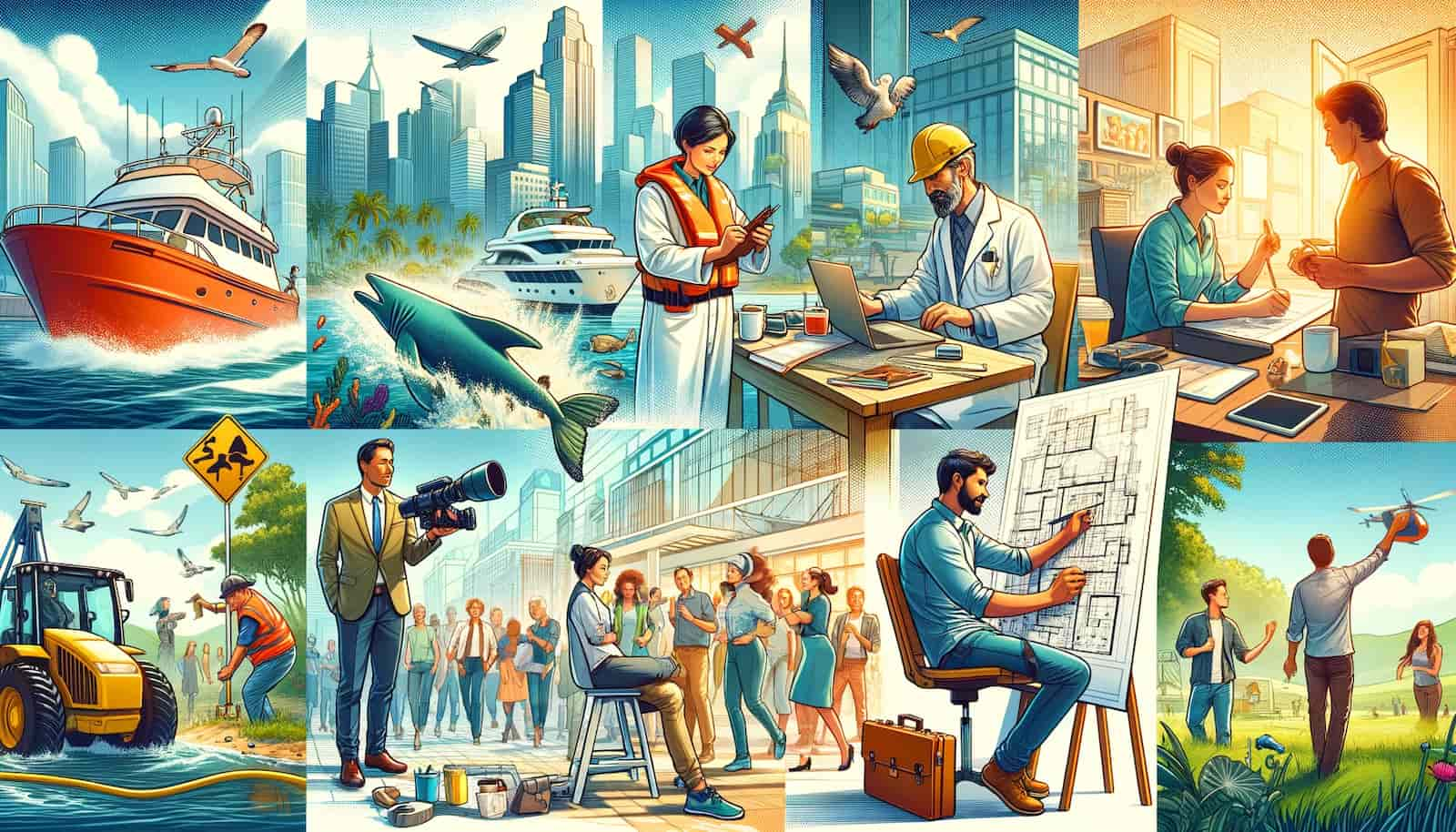Are you passionate about aviation and skilled in technical maintenance and repair? The field of aircraft maintenance offers a variety of rewarding career paths, from ensuring the safety and airworthiness of aircraft to maintaining avionics systems and performing specialized tasks in aircraft interiors and composite materials. Let’s explore the diverse roles within aircraft maintenance and aviation technology and the essential responsibilities and skills required for each position.
1. Aircraft Maintenance Engineer:
Responsibilities:
- Routine Maintenance: Perform scheduled maintenance tasks, inspections, and repairs on aircraft systems, structures, and components to ensure airworthiness and compliance with regulatory standards.
- Troubleshooting: Diagnose and troubleshoot complex mechanical, electrical, and avionics issues using technical manuals, diagnostic equipment, and specialized tools.
- Documentation: Maintain accurate records of maintenance activities, including work performed, parts used, and compliance with regulatory requirements, to ensure traceability and accountability.
2. Avionics Technician:
Responsibilities:
- Avionics Systems Maintenance: Install, troubleshoot, and repair avionics systems and components, including communication, navigation, and flight control systems, to ensure proper functioning and compliance with regulatory standards.
- Software Updates: Perform software updates, configuration changes, and system integrations to maintain avionics systems’ performance and compatibility with aircraft operations.
- Testing and Calibration: Conduct system testing, calibration, and performance checks using specialized equipment and diagnostic tools to verify functionality and accuracy.
3. Aircraft Maintenance Supervisor:
Responsibilities:
- Team Leadership: Supervise and coordinate the activities of aircraft maintenance technicians, ensuring adherence to safety protocols, quality standards, and project timelines.
- Work Planning: Plan and prioritize maintenance tasks, allocate resources, and schedule personnel to optimize workflow efficiency and minimize aircraft downtime.
- Training and Development: Provide training, mentoring, and performance feedback to maintenance staff, promoting continuous learning and skill development to enhance team capabilities and performance.
4. Aircraft Inspector:
Responsibilities:
- Quality Assurance: Conduct thorough inspections of aircraft structures, systems, and components to verify compliance with maintenance standards, technical specifications, and regulatory requirements.
- Defect Identification: Identify and document discrepancies, defects, and non-conformities through visual inspections, non-destructive testing (NDT), and precision measurement techniques.
- Regulatory Compliance: Ensure aircraft maintenance activities adhere to aviation regulations, airworthiness directives, and manufacturer’s specifications, maintaining the highest standards of safety and reliability.
5. Aircraft Maintenance Planner:
Responsibilities:
- Maintenance Scheduling: Develop comprehensive maintenance plans and schedules based on aircraft usage, operational requirements, and regulatory mandates, optimizing resource utilization and minimizing downtime.
- Parts Procurement: Coordinate the procurement and availability of aircraft parts, components, and consumables to support scheduled maintenance activities and ensure timely completion of work orders.
- Documentation Management: Maintain accurate records of maintenance plans, work orders, parts inventories, and compliance documentation, facilitating effective communication and coordination across maintenance teams.
6. Aircraft Engine Mechanic:
Responsibilities:
- Engine Maintenance: Perform inspections, repairs, and overhauls of aircraft engines, including piston engines, turboprop engines, and jet engines, to ensure optimal performance and reliability.
- Component Replacement: Replace worn or damaged engine components, such as pistons, cylinders, turbine blades, and fuel systems, following manufacturer’s guidelines and technical specifications.
- Performance Testing: Conduct engine performance tests, run-ups, and operational checks to verify proper functioning, diagnose issues, and ensure compliance with performance standards.
7. Aircraft Sheet Metal Mechanic:
Responsibilities:
- Structural Repair: Repair and fabricate aircraft structural components, panels, and surfaces using sheet metal fabrication techniques, such as cutting, bending, forming, and riveting, to restore integrity and airworthiness.
- Corrosion Control: Identify and repair corrosion, erosion, and damage to aircraft structures and surfaces, applying protective coatings and sealants to prevent further deterioration and maintain structural integrity.
- Composite Repair: Perform composite repairs on aircraft components made of composite materials, such as fiberglass, carbon fiber, and Kevlar, using specialized techniques and materials to restore strength and durability.
8. Aircraft Interior Technician:
Responsibilities:
- Interior Refurbishment: Install, repair, and maintain aircraft interior components, including seating, cabinetry, flooring, and furnishings, to enhance passenger comfort and aesthetics.
- Entertainment Systems: Install and troubleshoot in-flight entertainment systems, Wi-Fi connectivity, and cabin electronics, ensuring seamless operation and passenger satisfaction.
- Safety Equipment: Inspect and maintain emergency equipment, such as evacuation slides, life rafts, and oxygen systems, to ensure compliance with safety regulations and passenger safety.
9. Aircraft Composite Technician:
Responsibilities:
- Composite Fabrication: Fabricate aircraft components and structures using composite materials, such as fiberglass, carbon fiber, and epoxy resins, following engineering blueprints and specifications.
- Bonding and Laminating: Perform bonding, laminating, and curing processes to assemble composite parts, ensuring proper adhesion, alignment, and strength.
- Surface Finishing: Prepare composite surfaces for finishing operations, such as sanding, painting, and polishing, to achieve smooth, aerodynamic surfaces and aesthetic appeal.













